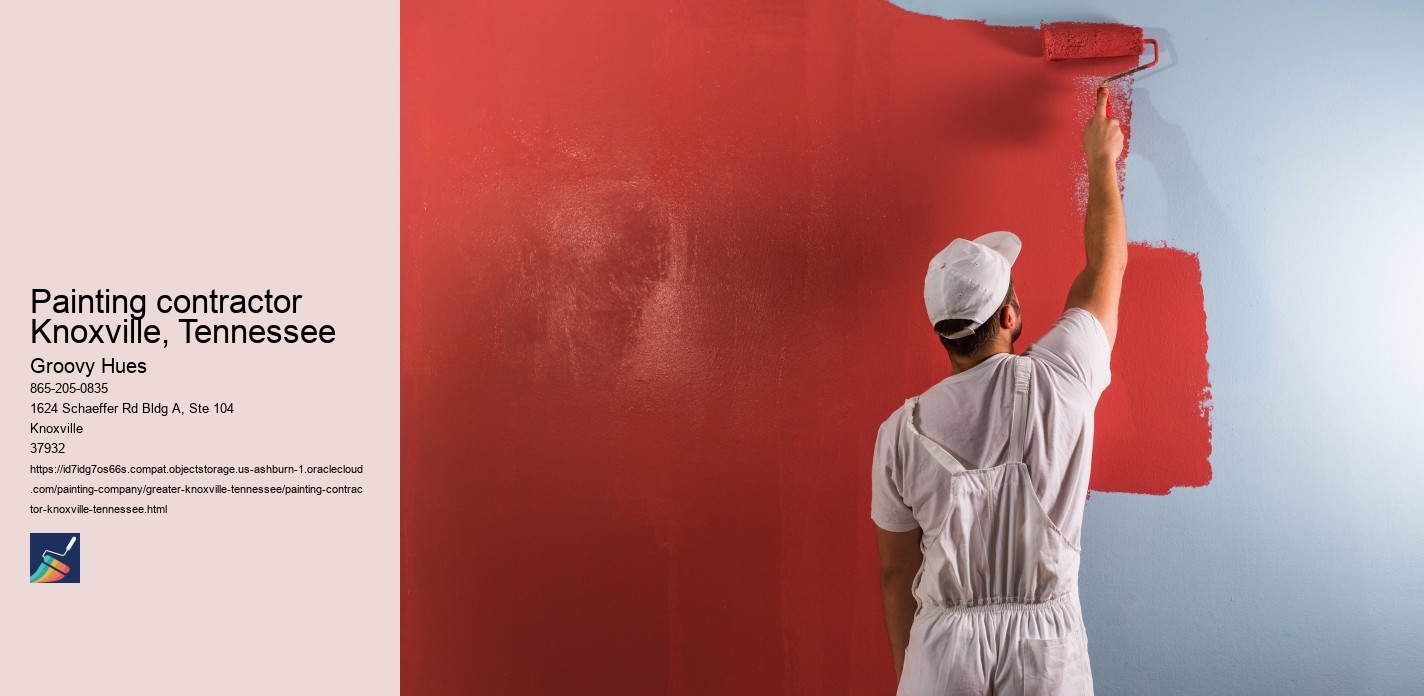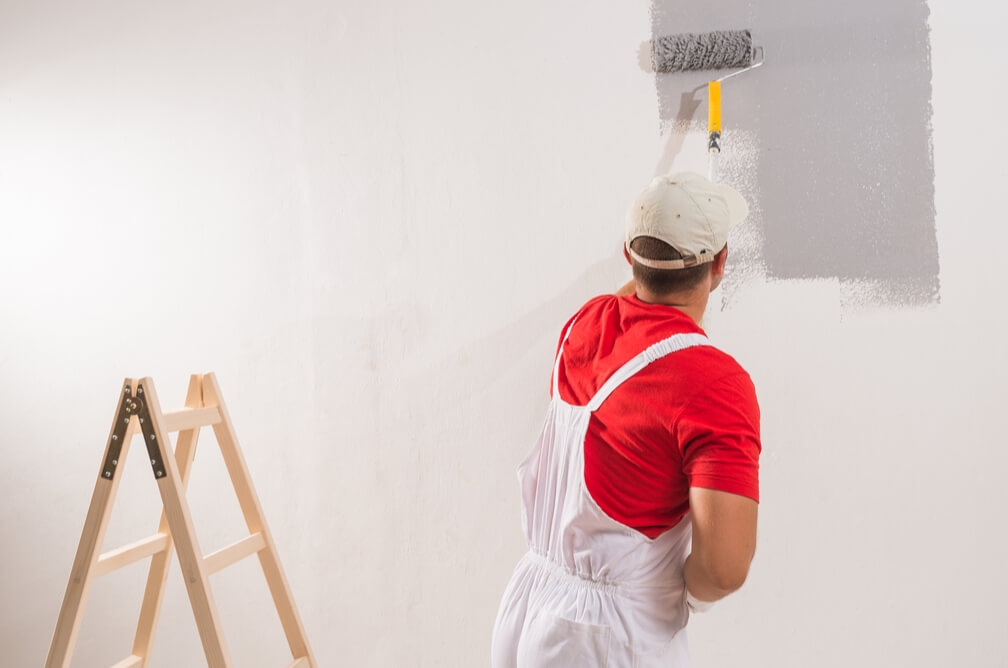






Knoxville | |
|---|---|
|
Seal Logo | |
| Nickname(s): | |
Location of Knoxville in Knox County, Tennessee. | |
Knoxville Location in the United States Show map of TennesseeKnoxville Knoxville (the United States) Show map of the United StatesKnoxville Knoxville (North America) Show map of North America | |
| Coordinates: 35°57′42″N 83°55′24″W / 35.9617°N 83.9232°W / 35.9617; -83.9232 | |
| Country | United States |
| State | Tennessee |
| County | Knox |
| Settled | 1786 |
| Founded | 1791 |
| Incorporated | 1815 |
| Founded by | James White |
| Named for | Henry Knox |
| Government | |
| • Type | Mayor–council |
| • Mayor | Indya Kincannon (D)[a] |
| • City Council | Council Members
|
| Area | |
| • City | 104.25 sq mi (270.01 km2) |
| • Land | 98.73 sq mi (255.72 km2) |
| • Water | 5.52 sq mi (14.30 km2) 5.4% |
| Elevation | 886 ft (270 m) |
| Population | |
| • City | 190,740 |
| • Rank | US: 135th |
| • Density | 1,931.90/sq mi (745.91/km2) |
| • Urban | 597,257 (US: 72nd) |
| • Urban density | 1,382.8/sq mi (533.9/km2) |
| • Metro | 868,546 (US: 64th) |
| • CSA | 1,096,961 (US: 50th) |
| Demonym | Knoxvillian |
| Time zone | UTC−5 (EST) |
| • Summer (DST) | UTC−4 (EDT) |
| Zip code | 37901-37902, 37909, 37912, 37914-37920-37924, 37927-37934, 37938-37940, 37950, 37995-37998 |
| Area code | 865 |
| FIPS code[14] | 47-40000 |
| GNIS feature ID | 1648562[12] |
| Website | www |
Knoxville is the home of the flagship campus of the University of Tennessee, whose sports teams, the Tennessee Volunteers, are popular in the surrounding area. Knoxville is also home to the headquarters of the Tennessee Valley Authority, the Tennessee Supreme Court's courthouse for East Tennessee, and the corporate headquarters of several national and regional companies. As one of the largest cities in the Appalachian region, Knoxville has positioned itself in recent years as a repository of Appalachian culture and is one of the gateways to the Great Smoky Mountains National Park.[21][22] First settled in 1786, Knoxville was the first capital of Tennessee. The city struggled with geographic isolation throughout the early 19th century; the arrival of the railroad in 1855 led to an economic boom.[19] The city was bitterly divided over the issue of secession during the American Civil War and was occupied alternately by Confederate and Union armies, culminating in the Battle of Fort Sanders in 1863.[19] Following the war, Knoxville grew rapidly as a major wholesaling and manufacturing center. The city's economy stagnated after the 1920s as the manufacturing sector collapsed, the downtown area declined and city leaders became entrenched in highly partisan political fights.[19] Hosting the 1982 World's Fair helped reinvigorate the city,[19] and revitalization initiatives by city leaders and private developers have had major successes in spurring growth in the city, especially the downtown area.[20] Knoxville is a city in and the county seat of Knox County, Tennessee, United States.[15] As of the 2020 United States census, Knoxville's population was 190,740,[16] making it the largest city in the East Tennessee Grand Division and the state's third largest city after Nashville and Memphis.[17] It is the principal city of the Knoxville metropolitan area, which had a population of 879,773 in 2020.[18]
The first people to form substantial settlements in what is now Knoxville were indigenous people who arrived during the Woodland period (c. 1000 B.C. to A.D. 1000). One of the oldest artificial structures in Knoxville is a burial mound constructed during the early Mississippian culture period (c. A.D. 1000–1400). The earthwork mound has been preserved, but the campus of the University of Tennessee developed around it. Other prehistoric sites include an Early Woodland habitation area at the confluence of the Tennessee River and Knob Creek (near the Knox–Blount county line), and Dallas phase Mississippian villages at Post Oak Island (also along the river near the Knox–Blount line), and at Bussell Island (at the mouth of the Little Tennessee River near Lenoir City). By the 18th century, the Cherokee, an Iroquoian language people, had become the dominant tribe in the East Tennessee region; they are believed to have migrated centuries before from the Great Lakes area. They were consistently at war with the Creek (who spoke Muskogee) and Shawnee (who spoke Central Algonquian). The Cherokee people called the Knoxville area kuwanda'talun'yi, which means "Mulberry Place". Most Cherokee habitation in the area was concentrated in what the American colonists called the Overhill settlements along the Little Tennessee River, southwest of Knoxville. The first white traders and explorers were recorded as arriving in the Tennessee Valley in the late 17th century. There is significant evidence that Spanish explorer Hernando de Soto visited Bussell Island in 1540. The first major recorded Euro-American presence in the Knoxville area was the Timberlake Expedition, which passed through the confluence of the Holston and French Broad into the Tennessee River in December 1761. Henry Timberlake, an Anglo-American emissary from the Thirteen Colonies to the Overhill settlements along the Little Tennessee River, recalled being pleased by the deep waters of the Tennessee after his party had struggled down the relatively shallow Holston for several weeks. The end of the French and Indian War and confusion brought about by the American Revolution led to a drastic increase in Euro-American settlement west of the Appalachians. By the 1780s, white settlers were already established in the Holston and French Broad valleys. The U.S. Congress ordered all illegal settlers out of the valley in 1785, but with little success. As settlers continued to trickle into Cherokee lands, tensions between the settlers and the Cherokee rose steadily. In 1786, James White, a Revolutionary War officer, and his friend James Connor built White's Fort near the mouth of First Creek, on land White had purchased three years earlier. In 1790, White's son-in-law, Charles McClung—who had arrived from Pennsylvania the previous year—surveyed White's holdings between First Creek and Second Creek for the establishment of a town. McClung drew up 64 0.5-acre (0.20 ha) lots. The waterfront was set aside for a town common. Two lots were set aside for a church and graveyard (First Presbyterian Church, founded 1792). Four lots were set aside for a school. That school was eventually chartered as Blount College and it served as the starting point for the University of Tennessee, which uses Blount College's founding date of 1794, as its own. Also in 1790, President George Washington appointed North Carolina surveyor William Blount governor of the newly created Territory South of the River Ohio. One of Blount's first tasks was to meet with the Cherokee and establish territorial boundaries and resolve the issue of illegal settlers. This he accomplished almost immediately with the Treaty of Holston, which was negotiated and signed at White's Fort in 1791. Blount originally wanted to place the territorial capital at the confluence of the Clinch River and Tennessee River (now Kingston), but when the Cherokee refused to cede this land, Blount chose White's Fort, which McClung had surveyed the previous year. Blount named the new capital Knoxville after Revolutionary War general and Secretary of War Henry Knox, who at the time was Blount's immediate superior. Problems immediately arose from the Holston Treaty. Blount believed that he had "purchased" much of what is now East Tennessee when the treaty was signed in 1791. However, the terms of the treaty came under dispute, culminating in continued violence on both sides. When the government invited Cherokee chief Hanging Maw for negotiations in 1793, Knoxville settlers attacked the Cherokee against orders, killing the chief's wife. Peace was renegotiated in 1794. Knoxville served as capital of the Southwest Territory and as capital of Tennessee (admitted as a state in 1796) until 1817, when the capital was moved to Murfreesboro. Early Knoxville has been described as an "alternately quiet and rowdy river town". Early issues of the Knoxville Gazette—the first newspaper published in Tennessee—are filled with accounts of murder, theft, and hostile Cherokee attacks. Abishai Thomas, a friend of William Blount, visited Knoxville in 1794 and wrote that, while he was impressed by the town's modern frame buildings, the town had "seven taverns" and no church. Knoxville initially thrived as a way station for travelers and migrants heading west. Its location at the confluence of three major rivers in the Tennessee Valley brought flatboat and later steamboat traffic to its waterfront in the first half of the 19th century, and Knoxville quickly developed into a regional merchandising center. Local agricultural products—especially tobacco, corn, and whiskey—were traded for cotton, which was grown in the Deep South. The population of Knoxville more than doubled in the 1850s with the arrival of the East Tennessee and Georgia Railroad in 1855.' Among the most prominent citizens of Knoxville during the Antebellum years was James White's son, Hugh Lawson White (1773–1840). White first served as a judge and state senator, before being nominated by the state legislature to replace Andrew Jackson in the U.S. Senate in 1825. In 1836, White ran unsuccessfully for president, representing the Whig Party. Anti-slavery and anti-secession sentiment ran high in East Tennessee in the years leading up to the American Civil War. William "Parson" Brownlow, the radical publisher of the Knoxville Whig, was one of the region's leading anti-secessionists (although he strongly defended the practice of slavery). Blount County, just south of Knoxville, had developed into a center of abolitionist activity, due in part to its relatively large Quaker faction and the anti-slavery president of Maryville College, Isaac Anderson. The Greater Warner Tabernacle AME Zion Church, Knoxville was reportedly a station on the underground railroad. Business interests, however, guided largely by Knoxville's trade connections with cotton-growing centers to the south, contributed to the development of a strong pro-secession movement within the city. The city's pro-secessionists included among their ranks J. G. M. Ramsey, a prominent historian whose father had built the Ramsey House in 1797. Thus, while East Tennessee and greater Knox County voted decisively against secession in 1861, the city of Knoxville favored secession by a 2-1 margin. In late May 1861, just before the secession vote, delegates of the East Tennessee Convention met at Temperance Hall in Knoxville in hopes of keeping Tennessee in the Union. After Tennessee voted to secede in June, the convention met in Greeneville and attempted to create a separate Union-aligned state in East Tennessee. In July 1861, after Tennessee had joined the Confederacy, General Felix Zollicoffer arrived in Knoxville as commander of the District of East Tennessee. While initially lenient toward the city's Union sympathizers, Zollicoffer instituted martial law in November, after pro-Union guerrillas burned seven of the city's bridges. The command of the district passed briefly to George Crittenden and then to Kirby Smith, who launched an unsuccessful invasion of Kentucky in August 1862. In early 1863, General Simon Buckner took command of Confederate forces in Knoxville. Anticipating a Union invasion, Buckner fortified Fort Loudon (in West Knoxville, not to be confused with the colonial fort to the southwest) and began constructing earthworks throughout the city. However, the approach of stronger Union forces under Ambrose Burnside in the summer of 1863 forced Buckner to evacuate Knoxville before the earthworks were completed. Burnside arrived in early September 1863, beginning the Knoxville Campaign. Like the Confederates, he immediately began fortifying the city. The Union forces rebuilt Fort Loudon and erected 12 other forts and batteries flanked by entrenchments around the city. Burnside moved a pontoon bridge upstream from Loudon, allowing Union forces to cross the river and build a series of forts along the heights of South Knoxville, including Fort Stanley and Fort Dickerson. As Burnside was fortifying Knoxville, a Confederate army under Braxton Bragg defeated Union forces under William S. Rosecrans at the Battle of Chickamauga (near the Tennessee-Georgia line) and laid siege to Chattanooga. On November 3, 1863, the Confederates sent General James Longstreet to attack Burnside at Knoxville and prevent him from reinforcing the Union at Chattanooga. Longstreet wanted to attack the city from the south, but lacking the necessary pontoon bridges, he was forced to cross the river further downstream at Loudon (November 14) and march against the city's heavily fortified western section. On November 15, General Joseph Wheeler unsuccessfully attempted to dislodge Union forces in the heights of South Knoxville, and the following day Longstreet failed to cut off retreating Union forces at the Battle of Campbell's Station (now Farragut). On November 18, Union General William P. Sanders was mortally wounded while conducting delaying maneuvers west of Knoxville, and Fort Loudon was renamed Fort Sanders in his honor. On November 29, following a two-week siege, the Confederates attacked Fort Sanders, but failed after a fierce 20-minute engagement. On December 4, after word of the Confederate defeat at Chattanooga reached Longstreet, he broke his siege of Knoxville and went into winter quarters at Russellville. He rejoined the Army of Northern Virginia the following spring. The Union victory in the Knoxville Campaign and at Chattanooga put much of East Tennessee under Union control for the rest of the war. After the war, northern investors such as brothers Joseph and David Richards helped Knoxville recover relatively quickly. The Richards brothers convinced 104 Welsh immigrant families to migrate from the Welsh Tract in Pennsylvania to work in a rolling mill then co-owned by Thomas Walker. These Welsh families settled in an area now known as Mechanicsville. The Richards brothers also co-founded the Knoxville Iron Works beside the L&N Railroad, also employing Welsh workers. Later, the site was used as the grounds for the 1982 World's Fair. Other companies that sprang up during this period were Knoxville Woolen Mills, Dixie Cement, and Woodruff's Furniture. Between 1880 and 1887, 97 factories were established in Knoxville, most of them specializing in textiles, food products, and iron products. By the 1890s, Knoxville was home to more than 50 wholesaling houses, making it the third largest wholesaling center by volume in the South. The Candoro Marble Works, established in the community of Vestal in 1914, became the nation's foremost producer of pink marble and one of the nation's largest marble importers. In 1896, Knoxville celebrated its achievements by creating its own flag. The Flag of Knoxville, Tennessee represents the city's progressive growth due to agriculture and industry. In 1869, Thomas Humes, a Union sympathizer and president of East Tennessee University, secured federal post-war damage reimbursement and state-designated Morrill Act funding to expand the college, which had been occupied by both armies during the war. Charles Dabney, who became president of the university in 1887, overhauled the faculty and established a law school in an attempt to modernize the scope of the university. In 1879, the state changed its name to the University of Tennessee, at the request of the trustees, who hoped to secure more funding from the Tennessee state legislature. The post-war manufacturing boom brought thousands of immigrants to the city. The population of Knoxville grew from around 5,000 in 1860 to 32,637 in 1900. West Knoxville was annexed in 1897, and over 5,000 new homes were built between 1895 and 1904. In 1901, train robber Kid Curry (whose real name was Harvey Logan), a member of Butch Cassidy's Wild Bunch was captured after shooting two deputies on Knoxville's Central Avenue. He escaped from the Knoxville Jail and rode away on a horse stolen from the sheriff. Knoxville hosted the Appalachian Exposition in 1910 and 1911 and the National Conservation Exposition in 1913. The latter is sometimes credited with giving rise to the movement to create a national park in the Great Smoky Mountains, some 20 miles (32 km) south of Knoxville. Around this time, a number of affluent Knoxvillians began purchasing summer cottages in Elkmont and began to pursue the park idea more vigorously. They were led by Knoxville businessman Colonel David C. Chapman, who, as head of the Great Smoky Mountains Park Commission, was largely responsible for raising the funds for the purchase of the property that became the core of the park. The Great Smoky Mountains National Park opened in 1933. Knoxville's reliance on a manufacturing economy left it particularly vulnerable to the effects of the Great Depression. The Tennessee Valley also suffered from frequent flooding, and millions of acres of farmland had been ruined by soil erosion. To control flooding and improve the economy in the Tennessee Valley, the federal government created the Tennessee Valley Authority in 1933. Beginning with Norris Dam, TVA constructed a series of hydroelectric and other power plants throughout the valley over the next few decades, bringing flood control, jobs, and electricity to the region. The Federal Works Projects Administration, which also arrived in the 1930s, helped build McGhee-Tyson Airport and expand Neyland Stadium. TVA's headquarters, which consists of two twin high rises built in the 1970s, were among Knoxville's first modern high-rise buildings. In 1947, John Gunther dubbed Knoxville the "ugliest city" in America in his best-selling book Inside U.S.A. Gunther's description jolted the city into enacting a series of beautification measures that helped improve the appearance of the Downtown area. Knoxville's textile and manufacturing industries largely fell victim to foreign competition in the 1950s and 1960s, and after the establishment of the Interstate Highway system in the 1960s, the railroad—which had been largely responsible for Knoxville's industrial growth—began to decline. The rise of suburban shopping malls in the 1970s drew retail revenues away from Knoxville's downtown area. While government jobs and economic diversification prevented widespread unemployment in Knoxville, the city sought to recover the massive loss of revenue by attempting to annex neighboring communities. Knoxville would successfully annex the communities of Bearden and Fountain City, which were Knoxville's biggest suburbs prior to their annexations in 1962. Knoxville officials would attempt the annexation of the neighboring Farragut-Concord community in West Knox County, but would fail following the incorporation of Farragut in 1980. These annexation attempts often turned combative, and several attempts to consolidate Knoxville and Knox County into a metro government failed, while school boards and the planning commissions would merge on July 1, 1987. With further annexation attempts stalling, Knoxville initiated several projects aimed at boosting revenue in its downtown area. The 1982 World's Fair—the most successful of these projects, with eleven million visitors—became one of the most popular expositions in U.S. history. The Rubik's Cube made its debut at this event. The fair's energy theme was selected due to Knoxville being the headquarters of the Tennessee Valley Authority and for the city's proximity to the Oak Ridge National Laboratory. The Sunsphere, a 266-foot (81 m) steel truss structure topped with a gold-colored glass sphere, was built for the fair and remains one of Knoxville's most prominent structures, along with the adjacent Tennessee Amphitheater which underwent a renovation that was completed in 2008. During the 1980s and into the 1990s, the city would see one of its largest expansions of its city limits, with a reported 26 square miles of "shoestring annexation" under the administration of Mayor Victor Ashe. Ashe's efforts would be controversial, largely consisting of annexation of interstate right-of-ways, highway-oriented commercial clusters, and residential subdivisions to increase tax revenue for the city. Residents would voice opposition, citing claims of urban sprawl and government overreach. With the dawn of the 21st century, Knoxville's downtown has been developing, with the opening of the Women's Basketball Hall of Fame and the Knoxville Convention Center, the redevelopment of Market Square, a new visitors center, a regional history museum, a Regal Cinemas theater, several restaurants and bars, and many new and redeveloped condominiums. Since 2000, Knoxville has successfully brought business back to the downtown area. The arts in particular have begun to flourish; there are multiple venues for outdoor concerts, and Gay Street hosts a new arts annex and gallery surrounded by many studios and new businesses as well. The Bijou and Tennessee Theatres underwent renovation, providing an initiative for the city and its developers to re-purpose the old downtown. Development has also expanded across the Tennessee River on the South Knoxville waterfront. In 2006, the City of Knoxville adopted the South Waterfront Vision Plan, a long-term improvement project to revitalize the 750 acre waterfront fronting three miles of shoreline on the Tennessee River. The project's primary focus is the commercial and residential development over a 20-year timeline. The former Knoxville Baptist Hospital, located on the waterfront, was demolished in 2016 to make for mixed-use project called One Riverwalk. The development consisted of three office buildings, including a new headquarters for Regal Entertainment Group, a hotel, student housing, and 300 multi-family residential units. In June 2020, the Knoxville City Council announced the investment of over $5.5 million (~$5.73 million in 2021) dollars in federal and local funds towards the development of a business park along the Interstate 275 corridor in North Knoxville. The project was first proposed by a study prepared Knoxville-Knox County Metropolitan Planning Commission in 2007. In August 2020, UT President and Tennessee Smokies owner Randy Boyd announced plans of a mixed-use baseball stadium complex in the Old City neighborhood of Knoxville.